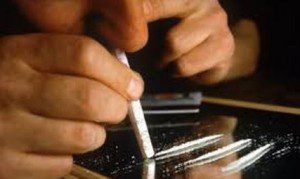Welcome back to Ten Reasons for the Heroin Epidemic. This is the second and final primer to lay the foundation before launching into the ten reasons we currently have a heroin epidemic raging across our country. But before I proceed, I hope you all will read the recent article published in the New York Times on April 17, 2015 entitled, Serving All Your Heroin Needs. Here are two quotes that are extremely revealing:
“… selling heroin across the United States resembles pizza delivery.”
“… a new home for heroin is in rural and suburban Middle America …”
To better understand why pizza delivery of heroin works and how it found its way into suburban and rural America, there are three related terms that are essential to understand:
- Tolerance
- Dependency
- Addiction
Tolerance refers to not getting as much bang for the buck. In medical terms, it is the body’s adapting to a drug which then necessitates consuming more of the drug to achieve the same effect.
Dependency refers to the state of having symptoms in the absence of the drug. Examples of withdrawal symptoms are the “shakes” after a heavy drinker stops drinking; or the chills, nausea, vomiting, abdominal cramping, etc. when a heroin addict is deprived of his/her next “fix”.
Addiction is the drug seeking behavior of an individual. However, a person who is dependent may not necessarily be addicted. Remembering from the last blog that the disease of addiction has bio-psycho-social aspects, a person may become dependent but not have the components of addiction.
For example, if sweet Aunt Tillie ends up in the hospital with severe intractable pain from a tumor pressing on her spinal column, she may be given an opiate such as morphine to reduce her pain until the tumor size can be minimized by radiation or chemotherapy or surgically removed. A few weeks of medication may be needed and during that time Aunt Tillie develops tolerance and dependency to morphine. After the tumor size is reduced and the pressure on the spinal nerves is diminished, the frequency and amount of morphine is gradually decreased to avoid withdrawal symptoms. After a week or so, Aunt Tillie will no longer require an opiate to eliminate her pain and will be showing no signs of withdrawal. After she is discharged home, she is happy taking an occasional non-narcotic pain medication like Tylenol or Ibuprofen. But how about the person who goes home and has some bio, psycho and/or social components of the disease of addiction. He/she may very well start looking for that euphoric “high” and start seeking drugs. That is the essential difference between dependency and addiction!
We are now ready to delve into the 10 reasons we have a heroin epidemic. Next blog we will focus on the injudicious prescribing of opiates by doctors as reason #1. But first let’s get a look at Jimmy, Annette and Travis – they are dependent and also addicted.
Annette laid out several lines of cocaine, one definitively larger than the other two. Everyone knew the “fat line,” as they jokingly called it, was hers. Travis prepared the portions of heroin, which had already been processed to a fine powder for snorting. They were now ready to snort their speedballs, a combination of heroin and cocaine. Annette much preferred an amphetamine rush, so her drug cocktail was heavily weighted with the cocaine powder and contained only a small amount of heroin. The reverse was true for the boys….
Within an hour after the speedball, Annette craved more cocaine, but she wanted to set an example for Travis, who undoubtedly would soon be itching for more heroin. Her cocaine buzz was starting to dissipate and numbing herself with alcohol served as a distraction to the hollow depressed feeling as a result of the depleted levels of the chemical dopamine in her brain. Dopamine, a neurotransmitter, is an essential naturally occurring compound that is required to stimulate the portion of the brain that elicits the feeling of pleasure. The greater the frequency and amount of cocaine used, the greater the amount of dopamine is depleted. This results in longer lag times for the brain to produce sufficient quantities of dopamine and therefore progressively longer periods of pleasure deprivation and sadness. This vicious cycle encourages more use, which only partially rectifies the effects of the depleted dopamine stores. Annette did not need a course in neurochemistry to understand that doing more and more lines was a never-ending journey.



